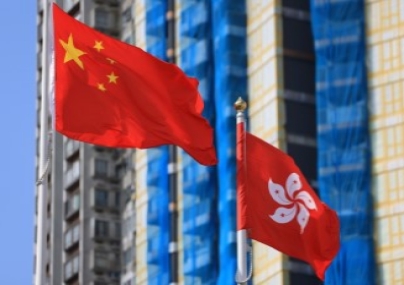It has been a difficult few years for Japanese companies. The March 2011 earthquake obliterated profits and sent investor confidence to record lows. Coupled with unfavourable demographics and a saturated market at home, Japanese companies have sought greener pastures for M&A abroad. Southeast Asia is one region that is attracting a rapidly increasing amount of attention, boasting healthy economic growth rates, attractively low costs, and a burgeoning middle class. It is not just Japanese companies that are expanding abroad—the nations’ Big Four law firms are also expanding their physical presence overseas, with a particular focus on Southeast Asia.
Going overseas
Despite the weakening yen, Japan Inc’s foray into Southeast Asia has remained robust. “The number of M&A cases from Japan to Vietnam and the region is still increasing, even though the local economy is not necessarily very good in Vietnam,” says Hikaru Oguchi, managing partner of Nishimura & Asahi’s Ho Chi Minh City and Hanoi offices. While Oguchi and other Japanese lawyers anticipate that activity in the region will only continue to increase, it is important to note that Japanese companies are not only looking at Southeast Asia. “Asia is obviously a popular destination, but Japanese companies are equally looking at Western markets as well. There are a lot more U.S. target company deals than one would think,” says Takahiro Saito, partner at Simpson Thacher & Bartlett in Tokyo.
Historically, Japanese companies have turned to Southeast Asia for its attractively low manufacturing costs. But now, they view the region as a market to sell their products too, says Matt Komatsu, co-representative partner of Mori Hamada & Matsumoto’s Singapore office. “There are still many Japanese manufacturers acquiring Southeast Asian companies, but recently we have observed a lot of activity in the retail, IT and logistics businesses,” says Komatsu. In November last year, Mori Hamada & Matsumoto represented Aeon, a Japanese retailer, on its acquisition of Carrefour’s business in Malaysia for 250 million euros ($318 million).
The swing towards Southeast Asia also underscores a strategy known as “China plus one”, which Japanese companies are adopting to lessen their reliance on China. Japan’s Aeon, which has overseas operations in China, Hong Kong, Thailand, and most recently Malaysia, also plans to open stores in Indonesia, Vietnam and Cambodia. “However, China will continue to be a very important country for Japanese companies. They still have a presence in China and continue to be active there, but simultaneously they want to diversify from China to Southeast Asia,” says Hisashi Hara, head partner of Nagashima Ohno & Tsunematsu’s Singapore office.
No alternative
Despite a strong last few years, Japanese Inc has curtailed overseas acquisitions in the first three months of 2013. Japanese companies announced $5.5 billion worth of overseas acquisitions between Jan. 1 and Mar. 20, down 63 percent from the same quarter a year earlier, while the number of deals fell by more than a third, Thomson Reuters data show. The slowdown overlapped with a near 20 percent tumble in the yen against the dollar since mid-November 2012 in a sell-off triggered by the elevation of Shinzo Abe, a proponent of aggressive monetary easing, to prime minister. The depreciation of the yen makes it more difficult for Japanese companies to make overseas acquisitions.
In a gamble to boost growth and hit an inflation target of 2 percent, the Bank of Japan (BOJ) unleashed the world’s most intense burst of monetary stimulus on Apr. 4, promising to inject about $1.4 trillion into the economy in less than two years. The BOJ will buy 7.5 trillion yen of long-term government bonds per month, and will also increase purchases of exchange-traded funds by 1 trillion yen per year and REITs by 30 billion yen per year. “The stimulus will have a good impact on the Japanese economy in general, and it will strengthen Japanese companies’ ability to be more active,” says Hara.
But the monetary injection will weaken the yen further, which may dissuade some Japanese companies from their overseas acquisitions. “It might discourage people from considering new deals. But for the people who have, over the years, decided that they really need to expand abroad, [deal flow] is not going to be too drastically tempered,” says Saito.
Indeed, no one predicts that acquisitions will remain depressed for long. Japanese firms are sitting on more than $2 trillion in cash and still view overseas deals as a core strategy to grow outside their mature home market, reports Reuters. While recent yen volatility may have deterred some companies from initiating new transactions, currency fluctuations will not put a dent in overseas deal making, Ken Siegel, managing partner at Morrison & Foerster in Tokyo, told Reuters.
Many in the finance and legal industry agree with Siegel’s view, and add that Japanese companies understand that looking overseas is the only way to grow, and in some cases, survive. “Even with the weaker yen, Japanese companies are still very active in acquiring Asian companies, and are looking at the bigger picture,” says Hara. Due to slowly falling prices, Japan has not grown in nominal terms for two decades. Meanwhile, Southeast Asia’s economic growth will return to a pre-crisis average of 5.5 percent over the next five years, according to the OECD’s Southeast Asian Economic Outlook 2013 report.
Saito agrees: “At current [exchange rate] levels, I do not get a sense that Japanese companies are starting to change their foreign M&A strategy. These companies really have no alternative – the demographics in Japan are just not going to change. A lot of companies, in trying to come up with a growth strategy, have been inevitably forced to look at markets outside of Japan, and M&A is a quick way to achieve that.”
'A 180 degree turn'
While a weakening yen might derail overseas deal-making to some extent, lawyers note that on the other hand, foreign interest into Japan is picking up. “There has been a lot of renewed focus on Japan as a whole, mostly from equity and real estate investors. There has really been a 180 degree turn from just a few months ago, when everyone was pessimistic about Japan,” says Saito. “Although I haven’t begun to see a surge in foreign interest in doing M&A deals in Japan yet, I have a feeling things may be brewing,” he adds.
Komatsu from Mori Hamada & Matsumoto agrees: “We have been asked for assistance from Southeast Asian investors on their investments into Japan, for example in real estate.”
It is not just Southeast Asian investors that are showing renewed interest in Japan. In April this year, international fund MGPA Asien Spezialfonds, which targets German-speaking institutional investors, made its first investments in Japan, acquiring two Tokyo office buildings. Leng-Fong Lai, a partner at Clifford Chance who worked on this transaction, commented in a statement: “We are seeing an uptick in foreign investor interest in the Japanese real estate investments. This looks to continue as the aggressive monetary easing policy of the Japanese government is having a very positive impact on the market, and making Japanese real estate assets particularly attractive.”
A new market
Nonetheless, lawyers say the outbound trend will continue, and that overseas deals are expected to pick up in the second half of 2013. The newest prospect for Japanese investors in the Southeast Asian market has been Myanmar, whose new civilian government is opening the country’s economy after five decades of rule by the military junta. With a land mass as large as Britain and France combined, Myanmar shares borders with 40 percent of the world's population in India, China, Bangladesh and Thailand. Taro Aso, Japan's finance minister, confirmed during his visit to Myanmar that Tokyo would waive part of Myanmar's 500 billion yen ($5.74 billion) debt and make a fresh loan of 50 billion yen, partly to kick-start construction of Thilawa, a $12.6 billion, 2,400 hectare special economic zone and centrepiece of Japan-Myanmar relations. The deals have made Japan a major player overnight in the opening of Myanmar. The part of the Thilawa package that includes debt forgiveness and refinancing adds up to nearly $5 billion, dwarfing the $76 million in aid from the United States in 2011 and 2012 and a two-year package of $200 million the European Union has pledged, reports Reuters.
Mitsubishi Corp, Marubeni Corp and Sumitomo Corp form the Japanese side of the joint venture developing Thilawa. Japan will also provide up to $3.2 billion in new lending to build another special economic zone and deep-sea port in Dawei, in southern Myanmar, which would be developed into Southeast Asia's largest industrial complex.
However, Myanmar is also still reworking its legal system after passing new foreign direct investment laws last year. “Legal reforms are rapidly changing the basic legal framework in Myanmar. Many Japanese companies are waiting to see the result of the reform before deciding whether to make investments,” says Nishimura & Asahi’s Oguchi. Some Japanese companies and investors are also finding it difficult to find a good business partner due to the remaining sanctions imposed by the U.S. and EU. Others also have concerns over how Myanmar’s elections in 2015 will affect the nation’s ongoing reforms, adds Oguchi.
On the other hand, some Japanese companies have already started closing deals in the region. In March this year, Unicharm acquired Singapore’s CFA International Paper Products, which holds an 88 percent stake in Myanmar Care Products, a sanitary products maker in Myanmar. The purchase will be followed by the acquisition of a 10 percent stake in Myanmar Care Products through Unicharm’s affiliate in Thailand. This marked one of the first M&A transactions by a Japanese company in Myanmar, says Komatsu from Mori Hamada & Matsumoto, whose firm represented Unicharm.
A new battleground
Japan’s law firms too are following their clients overseas, stressing the importance of establishing a physical presence outside its borders. Mori Hamada & Matsumoto and Nishimura & Asahi both opened offices in Singapore in 2012 to better service Japanese companies on their investments abroad, as well as to assist regional companies looking to do business in Japan. Nagashima Ohno & Tsunematsu opened a Singapore office in January this year, while Anderson Mori & Tomotsune, the last of Japan’s Big Four law firms, announced plans in March to open offices in Singapore and Shanghai later this year. Nishimura & Asahi remains the only Japanese Big Four law firm with offices elsewhere in Southeast Asia, having set up shop in Ho Chi Minh City in October 2010 and Hanoi in August 2011. In an interview with ALB, a lawyer from a Japanese law firm, who requested anonymity, talked of plans to open a new office in Southeast Asia later this year.
While both Japanese companies and law firms are greatly benefitting from their investments into Southeast Asia, it is not always smooth sailing. “The Asian market is so different from North America or western Europe in the sense that each country has a different culture and different legal system. And generally in Southeast Asia, the rule of law has not been established so well, except in Singapore,” says Hara. “So, we must be very creative in order for us to be really valuable to our Japanese clients doing business in Asia, and we must have good working relationships with local law firms,” Hara adds.
Competition among law firms too in Southeast Asia is fierce, presenting a further challenge. According to Hara, Nagashima Ohno & Tsunematsu does not compete with other Japanese law firms in Singapore, which law firms use as a hub for the region. “The international law firms are our direct competitors. That is a challenge for us - to see if we can take a bigger piece of the pie of Japanese companies investing into Asia,” says Hara.
Of course, says Komatsu, there are sometimes uncertainties and ambiguities when doing business in Southeast Asia. “But we think it is getting better and better year by year. Our view on the coming year is that it is going to be a good one for our clients in this region.”
Follow us on Twitter: @ALB_Magazine.
.jpg) obliterated profits and sent investor confidence to record lows. Coupled with unfavourable demographics and a saturated market at home, Japanese companies have sought greener pastures for M&A abroad. Southeast Asia is one region that is attracting a rapidly increasing amount of attention, boasting healthy economic growth rates, attractively low costs, and a burgeoning middle class. It is not just Japanese companies that are expanding abroad—the nations’ Big Four law firms are also expanding their physical presence overseas, with a particular focus on Southeast Asia.
obliterated profits and sent investor confidence to record lows. Coupled with unfavourable demographics and a saturated market at home, Japanese companies have sought greener pastures for M&A abroad. Southeast Asia is one region that is attracting a rapidly increasing amount of attention, boasting healthy economic growth rates, attractively low costs, and a burgeoning middle class. It is not just Japanese companies that are expanding abroad—the nations’ Big Four law firms are also expanding their physical presence overseas, with a particular focus on Southeast Asia.

